Best Eye Drops for Dry Eyes
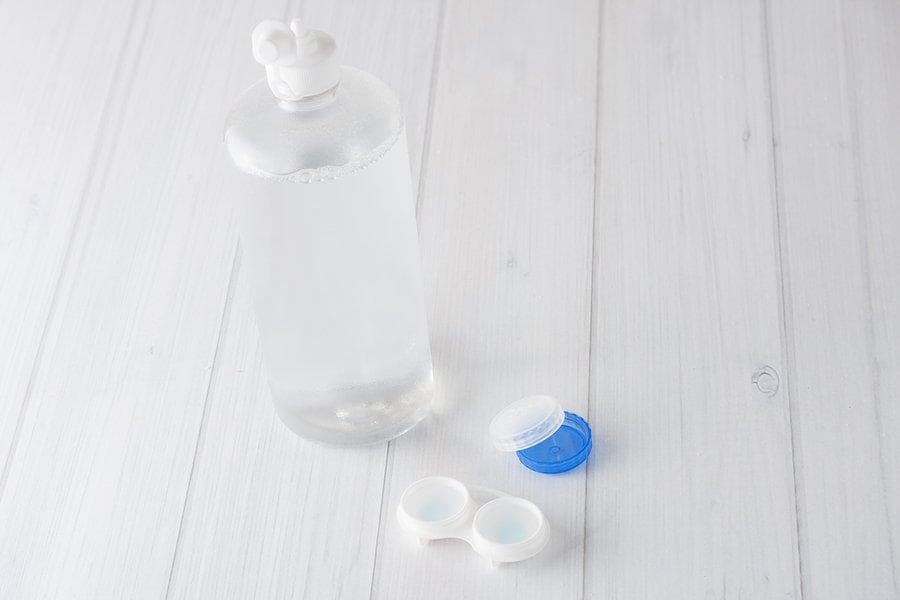
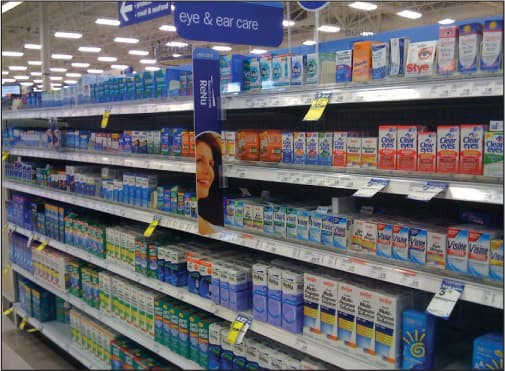
Ever spent any time walking up and down the eye care aisle at the pharmacy? Safe to say, the selection of eye drops to treat dry eyes can be overwhelming. The fact is, not all dry eye drops are created equal. The chemical makeup of each brand varies greatly from one to the other, with effectiveness also running the gamut, depending on the cause of your dry eye.
According to the National Eye Institute, they estimate that dry eye symptoms affects millions of adults in the United States. Symptoms often vary, including but not limited to:
- A scratchy sensation
- Feeling as if something is in the eye
- Stinging
- Burning
- Heavy Eyelids
- Blurred Vision
- Redness
To help guide you through the maze of dry eye drops, we’ve created this list of the top five over-the-counter brands to keep an “eye” out for.
What are different eye drops options for dry eyes?
1. GenTeal Gel for Severe Dry Eyes
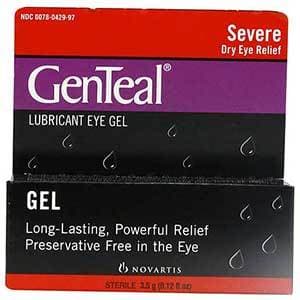
Active Ingredients: Hydroxypropyl methylcellulose 0.3% (various types of lubricants)
GenTeal Gel is formulated for people who suffer from mild, moderate or severe dry eye caused by the poor quality of their natural tear film. Substituting for this film, GenTeal helps prevent moisture from leaving the cornea.
Use: for dry eye caused by poor quality of the eye's natural tear film
2. Systane Ultra Lubricant Eye Drops
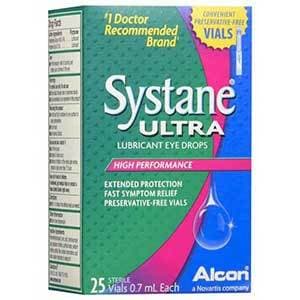
Active Ingredients: Polyethylene Glycol 400 0.4%, Propylene Glycol 0.3% (various types of lubricants)
Systane provides relief from burning and irritation caused from dry eyes due to poor tear quality. By lengthening the eye’s tear film breakup time, Systane strengthens the ability of the tear film to protect the ocular surface in between blinks.
Use: for dry eye caused by poor tear quality
3. Refresh Tears Lubricant Eye Drops
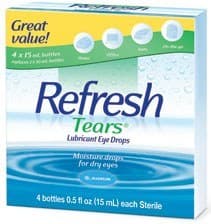
Active Ingredients: Polyvinyl alcohol 1.4%, povidone 0.6%, Carboxymethylcellulose Sodium 0.5% (various types of lubricants)
Get relief from dryness related to burning eyes and irritation that’s caused by a lack of tear production. Refresh Tears is an extra strength dry eye drop that works by moistening the eye, mimicking natural tears. The tetrahydrozoline hydrochloride in Refresh produces local vasoconstriction to reduce redness.
Use: for dry eye caused by a lack of tear production
4. Visine All Day Comfort Dry Eye Relief
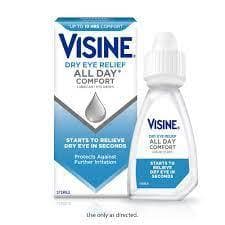
Active Ingredients: Polyethylene glycol 400 1%, Hypromellose 0.36%, Glycerin 0.2% (various types of lubricants)
Visine is an all-around product that provides soothing moisture for the comfort of your eyes all day or all night long. 1-2 drops help with temporary relief in burning, irritation, and discomfort from dry eyes.
Use: for dry eyes caused by exposure to the wind or sun
5. Soothe Lubricant Eye Drops Maximum Hydration
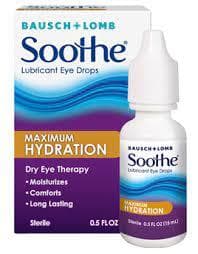
Active Ingredients: Povidone 2% (type of lubricant)
Soothe is designed to prevent further eye irritation from dry eye symptoms by providing long-lasting moisture and comfort. Their lubricant ingredient helps to give lasting hydration with each drop.
Use: for dry eyes to strengthen tear film and reduce inflammation
Refractive Surgery for Dry Eyes
You’ve possibly considered refractive surgery such as LASIK, but it’s important to note that LASIK can exacerbate dry eyes due to the corneal reshaping that’s required with the procedure*. A premium alternative to LASIK is, the EVO ICL (EVO) (Implantable Collamer Lens), a biocompatible, advanced lens that’s placed inside the eye for vision correction and does not induce dry eye syndrome. Best of all, there’s no removal of corneal tissue with EVO ICL. The EVO ICL lens also provides UV protection and can be removed if needed. Learn about the full benefits here.
*Shoja, MR. Besharati, MR. Dry eye after LASIK for myopia: Incidence and risk factors. European Journal of Ophthalmology. 2007; 17(1): pp. 1-6.
[Content Updated June 2019]
If you’re suffering from dry eyes and seek freedom from glasses and contacts, contact a qualified EVO ICL surgeon today to learn about your options!
Important Safety Information
The EVO Visian ICL Lens is intended for the correction of moderate to high nearsightedness. EVO Visian ICL and EVO Visian TICL surgery is intended to safely and effectively correct nearsightedness between -3.0 D to -15.0 D, the reduction in nearsightedness up to -20.0 D and treatment of astigmatism from 1.0 D to 4.0 D. If you have nearsightedness within these ranges, EVO Visian ICL surgery may improve your distance vision without eyeglasses or contact lenses. Because the EVO Visian ICL corrects for distance vision, it does not eliminate the need for reading glasses, you may require them at some point, even if you have never worn them before.
Implantation of the EVO Visian ICL is a surgical procedure, and as such, carries potentially serious risks. Please discuss the risks with your eye care professional. Complications, although rare, may include need for additional surgical procedures, inflammation, loss of cells from the back surface of the cornea, increase in eye pressure, and cataracts.
You should NOT have EVO Visian ICL surgery if:
- Your doctor determines that the shape of your eye is not an appropriate fit for the EVO Visian ICL
- You are pregnant or nursing
- You have moderate to severe damage to the optic nerve caused by increased pressure (glaucoma)
- You do not meet the minimum endothelial cell density for your age at the time of implantation as determined by your eye doctor
- Your vision is not stable as determined by your eye doctor
Before considering EVO Visian ICL surgery you should have a complete eye examination and talk with your eye care professional about EVO Visian ICL surgery, especially the potential benefits, risks, and complications. You should discuss the time needed for healing after surgery. For additional information with potential benefits, risks and complications please visit DiscoverICL.com.
Select Your Region
Latin America
References
1. Packer M. The Implantable Collamer Lens with a central port: review of the literature. Clin Ophthalmol. 2018;12:2427-2438.
2. Martínez-Plaza E, López-Miguel A, López-de la Rosa A, et al. Effect of the EVO+ Visian Phakic Implantable Collamer Lens on Visual Performance and Quality of Vision and Life, Am J Ophthalmol 2021;226:117-125.
3. Packer M. Evaluation of the EVO/EVO+ Sphere and Toric Visian ICL: Six month results from the United States Food and Drug Administration clinical trial. Clinical Ophthalmology. 2022;16:1541-53.
4. Parkhurst GD. A prospective comparison of phakic collamer lenses and wavefront-optimized laser-assisted in situ keratomileusis for correction of myopia. Clin Ophthalmol. 2016;10:1209-1215.
5. Zhang H, Deng Y, Ma K, Yin H, Tang J. Analysis on the changes of objective indicators of dry eye after implantable collamer lens (ICL) implantation surgery. Graefes Arch Clin Exp Ophthalmol. 2024 Jul; 262(7):2321-2328
6. Shoja, MR. Besharati, MR. Dry eye after LASIK for myopia: Incidence and risk factors. Eur J of Ophthalmol. 2007; 17(1): pp. 1-6.
7. Lee, Jae Bum et al. Comparison of tear secretion and tear film instability after photorefractive keratectomy and laser in situ keratomileusis. J Cataract Refract Surg., Volume 26 , Issue 9 , 1326 - 1331.
8. Parkhurst, G. Psolka, M. Kezirian, G. Phakic intraocular lens implantantion in United States military warfighters: A retrospective analysis of early clinical outcomes of the Visian ICL. J Refract Surg. 2011;27(7):473-481.
Feeling unsure?
We get it. Decisions like this take time to consider and research. We can help guide your decision with information that's the most relevant to you.
Do you currently wear glasses or contacts?